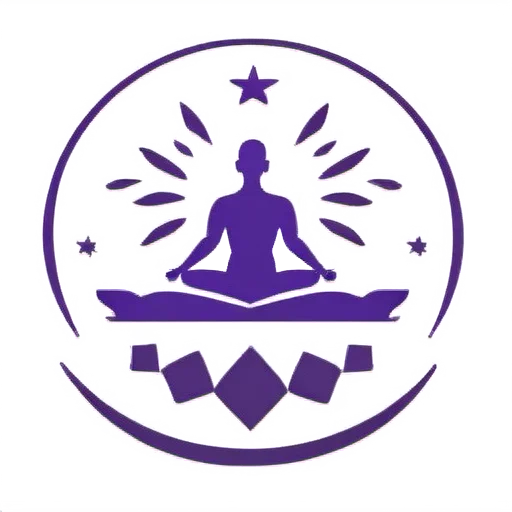When facing some people who don’t understand meditation, I am always asked the following questions:
Could you explain in a simple and understandable way what is meditation? What are the benefits of meditation? Why is meditation so popular now? How exactly do meditation?I want to learn. How should I start meditation? What is the entire set of practice procedures? Every time at this moment, I always have a sense of powerlessness where I don’t know where to start.

Meditation is a rigorous discipline with a long history and a unique and complete theoretical system that can be summarized clearly in just a few words. Then the benefits of meditation might just be empty talk.
Therefore, starting from the historical context, practical experience, way of thinking, scientific verification and literary works of meditation, I carefully selected fifteen best meditation books and attached the reasons for recommendation, hoping to help beginners understand their confusion about meditation and how to quickly get started with practice in a simple and understandable way, and complete the advancement from a beginner to a meditator.
However, what needs to be known is that reading is just a beginning. It merely helps you better understand meditation and embark on your practice journey more quickly. Meditation requires you to constantly give time and patience. There is no shortcut. Truly calming down and practicing for ten minutes is closer to the core of meditation than reading ten books.
The origin and development of meditation
1.Inner Revolution: Life, Liberty, and the Pursuit of Real Happiness
Author: Robert Thurman
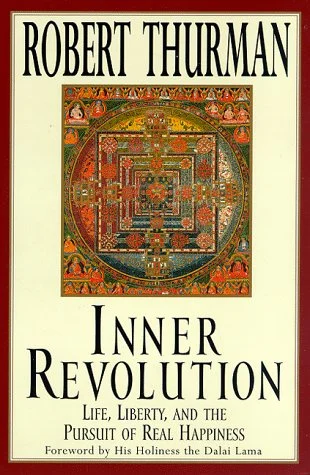
Content summary:
This book, from the perspective of academic discussion and based on Buddhist philosophy, traces in detail the evolution of how meditation spread globally from the East, especially its integration with psychology, philosophy and science.
The book focuses on analyzing the significance of the concept of “Anatta” in contemporary society, criticizes the erosion of spiritual freedom by materialism, and puts forward the core proposition of “inner revolution” – to reconstruct the cognitive relationship between the individual and the world through meditation and achieve true spiritual liberation
Highlights of the book:
Historical depth: Sorting out the key nodes of the integration of Buddhist meditation and Western psychology, such as the background of the birth of Mindfulness-based Stress Reduction Therapy (MBSR);
Philosophical Criticism: Sharply deconstructing the distorted definition of “happiness” by modern consumerism, calling for a return to intrinsic value;
Interdisciplinary argumentation: Citing cognitive science experiments, verify the influence of the “emptiness” philosophy on brain plasticity
Suitable for:
- People who are interested in the historical evolution and cross-cultural dissemination of meditation.
- Researchers of philosophy and religion
- An explorer seeking spiritual freedom against material alienation.
Methodology of Meditation Practice
1.Get Some Headspace: How Mindfulness Can Change Your Life in Ten Minutes a Day
Author: Andy Puddicombe
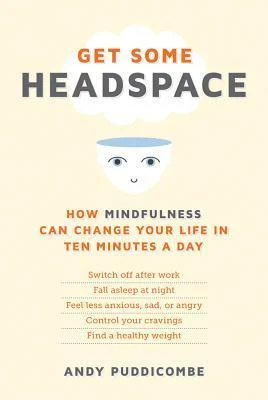
Content summary:
Andy Puddicombe is the co-founder of the renowned meditation App Headspace. This book tells the story of his monastic experience of studying meditation in Asia for over ten years. Entering the world of meditation from the perspective of an ordinary person, it is very mundane yet practical, and is highly suitable for readers who are new to meditation and feel confused about it.
The core of this book lies in transforming the ancient meditation technique into a tool to adapt to the fast-paced life and proposing a feasible plan of “10 minutes a day”. The book systematically dissects the essence of meditation, covering modules such as breathing anchoring, emotion management, and stress coping, and incorporates “fragmented meditation” (such as on-go practices during commutes and meals) and SOS meditation techniques for emergency situations
Highlights of the book:
Break the threshold of meditation: Reduce the psychological barriers of beginners with the “1% time philosophy” (10 minutes a day accounting for 1% of the entire day);
Scenario-based design: Develop specialized courses for work anxiety, sleep disorders, etc., such as the “Performance” series for enhancing concentration;
Neuroscience endorsement: Cited research confirms the enhancing effect of short-term meditation on the activity of the prefrontal cortex
Suitable for:
- High-pressure office workers.
- Digital natives,.
- Beginners seeking to get started with lightweight.
2.Meditation for Beginners
Author: Jack Kornfield

Content summary:
As the name suggests, this is a book for beginners of meditation. The author integrates Buddhist meditation with Western psychology to offer six basic meditation practices: breathing visualization, body scanning, compassionate meditation, walking meditation, emotional labeling, and daily mindfulness.
This book focuses on dispelling the myth of “perfect meditation”, emphasizing that “being aware of distractions is practice”, and guiding how to integrate meditation into daily life scenarios such as eating, brushing teeth, and washing dishes in a simple, clear and step-by-step manner. The food meditation and walking meditation inside are extremely easy to get started with.
At the beginning of walking meditation, you may feel very silly, but soon you will gradually calm down. Compared with breathing meditation, this type of action meditation might be more suitable for those who have difficulty calming down.
Highlights of the book:
Inclusive teaching: Accepting the inevitability of beginners’ “scattered thinking”, it proposes progressive training of “gently pulling back attention”.
Psychological healing orientation: Combining trauma healing theories, design methods for safely touching negative emotions;
Cultural integration: Use innovative practices such as coffee meditation to bridge the gap between Eastern and Western practices.
Suitable for:
- Psychology enthusiasts and trauma restorers who are open to spirituality.
3.The Miracle of Mindfulness
Author: Thich Nhat Hanh
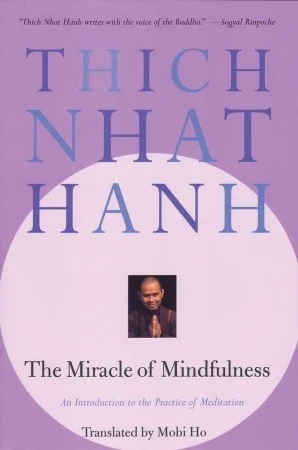
Content summary:
Thich Nhat Hanh, the author, was a master of Zen Buddhism in Vietnam and an important figure who introduced Eastern meditation to the Western world. This book goes beyond traditional technique guides and elevates mindfulness to a philosophy of life. It takes daily scenarios such as “When you wash the dishes, you are the master of the dishes” as examples to reveal that the essence of mindfulness is to be fully present in the present moment.
The book proposes that “breathing is the bridge connecting life and consciousness”, and through exercises such as “Orange Meditation” and “breathing Marking Method”, it teaches readers to activate awareness in eating, walking and talking. The core idea lies in that mindfulness is not about evading reality, but about facing pain with a clear mind and transforming suffering into the “burning firewood” that nourishes wisdom.
Highlights of the book:
Life-oriented practice: Independently created the “Space-Time nesting Method” (such as simultaneously perceiving the touch of the soles of the feet during meetings), breaking the deadlock of modern people’s fragmented attention.
Pain Transformation Formula: Propose the equation of “pain + awareness = Energy”, and provide a four-step method for emotional dissection;
Civilization Critical Perspective: Warning that in the AI era, Humanity is facing the crisis of “consciousness colonization”, and mindfulness is the ultimate firewall to safeguard human dignity.
Suitable for readers:
- Beginners of meditation seek practical paths in daily life;
- Psychological healers and emotional managers
- The group that is eager to rebuild concentration in the digital age.
4.Mindfulness in Plain English
Author: Bhante Henepola Gunaratana
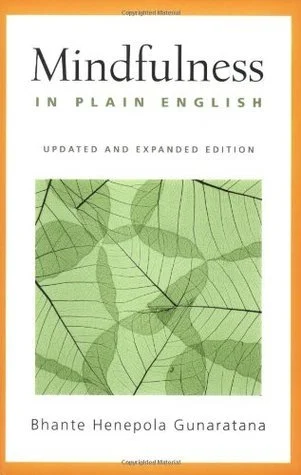
Content summary:
A classic work on vipassana meditation, authored by Venerable Debao, a Sri Lankan Zen master.
This book is an authoritative guide to Theravada Vipassana meditation, with “Bare Attention” at its core, elaborating on the advanced path of observing the breath → being aware of feelings → perceiving impermanence. Breaking the expectation of “mysterious experiences”, emphasizing that “meditation is like fitness”, and it is necessary to regularly train the “awareness muscles”.
This book aims to teach readers to achieve mindfulness by simply being aware of and mastering breathing. Take your breathing as the focus of your concentration, observe all the changes in your physical experiences, feelings and thoughts, and then observe the entire world as you perceive it. Finally, with an awakened and wise heart, face the ups and downs of life quietly.
Life lies between each inhalation and exhalation. We need to be more patient with our breathing.
Highlights of the book:
The introduction to observing breathing is very detailed and highly practical, making people eager to get started and learn.
Problem-oriented: A dedicated chapter addresses practical challenges such as leg pain and random thoughts.
Suitable for:
- Serious practitioners and participants in meditation camps who enjoy vipassana meditation and pursue the essence of meditation.
5.The Art of Living: Vipassana Meditation as Taught by S. N. Goenka
Author: William Hart
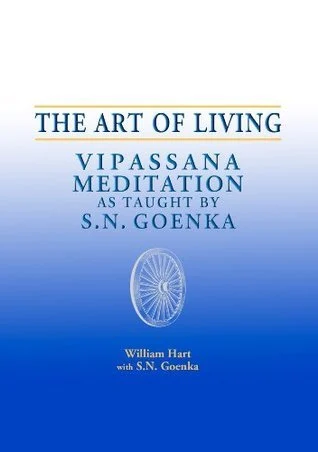
Content summary:
This book was written by the author William Hart under the guidance of S. N. Goenka. It systematically expounds the philosophy and practice of Goenka’s Vipassana meditation system and is one of the classic introductory books for learning vipassana meditation.
This book takes “body mindfulness” and “feeling mindfulness” as its dual axes, cultivating the awareness of subtle sensations through body scanning, and thereby experiencing the three marks of impermanence, suffering, and non-self. The book elaborates on the structure of the ten-day retreat course in detail, emphasizing the necessity of silence and precepts for deep awareness
Highlights of the book:
Structured teaching: Decompose vipassana into a three-stage training blueprint of “precepts → concentration → wisdom”;
Modern Adaptation: In response to the information overload in modern society, the “Sensory Fasting” solution is proposed;
Community support: Appendix Global Vipassana Center Guide and Post-class group practice suggestions.
Suitable for:
- Practitioners longing for deep transformation and those in need of addiction treatment.
6.Mindfulness for Beginners: Reclaiming the Present Moment—and Your Life
Author: Jon Kabat-Zinn

Content summary:
The introductory classic by the founder of Mindfulness-based Stress Reduction Therapy (MBSR) is a beginner’s guide to mindfulness written for beginners.
The book proposes a paradigm revolution from the “Doing Mode” to the “Being Mode”, designs tools such as the “Three-minute breathing space” and the “large body map”, and embeds mindfulness into daily life. The book cites clinical data to confirm its improvement effect on chronic pain and immune function
Highlights of the book:
Medical scenario verification: Present the intervention data of mindfulness on physical and mental diseases such as hypertension and psoriasis;
Micro-practice design: Propose fragmented integration solutions such as “Mindfulness when brushing teeth” and “breathing at traffic lights”;
Cognitive reconstruction: Deconstructing negative beliefs with the statement that “thoughts are merely events within the brain, not facts.
Suitable for:
- Readers who are just getting started with mindfulness meditation.
Meditative thinking worldview
1.The Power of Now: A Guide to Spiritual Enlightenment
Author: Eckhart Tolle
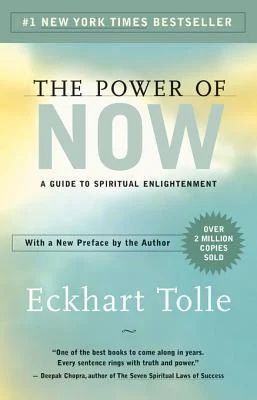
Content summary:
This book thoroughly deconstructs the root causes of human suffering – the violent colonization of the present by thinking, people’s obsession with the past and anxiety about the future.
Tory put forward the essential distinction between “mental time” (living in the past/future) and “clock time” (objective time), revealing that 90% of mental exhaustion stems from the continuous negation of reality by thinking. Through the triple methodology of “observing the flow of thought”, “anchoring physical perception”, and “activating the state of presence”, readers are guided to cut off the identification of thought and experience the ultimate truth that “the present is awakening”.
This book emphasizes the significance of “living in the present”. Through concise language and practical exercises, it guides readers on how to transcend the constraints of thinking and enter the conscious state of the “present”. Only by submitting to the present can you find true strength and the entrance to peace and tranquility.
Highlights of the book:
Disruptive cognitive revolution: The concept of “Pain Body” was proposed for the first time, revealing the subconscious mechanism of human addiction to pain – the ego maintains a sense of existence by creating pain
A Melting pot of Eastern and Western wisdom: Dissolving Descartes’ dualism of body and mind with “You are not equal to your brain”, and verifying the inhibitory effect of “presence state” on amygdala activity with the principle of neural plasticity
Immediate practical tools: Design scenario-based techniques such as “Three-minute breathing space” and “Sensory anchoring Method” to materialize abstract awakening as micro-practice during subway commuting and waiting in line
Suitable for:
- Anxiety type personality;
- The existential puzzler;
- Modern ascetics who seek the integration of spirituality and science.
2.Awareness: The Perils and Opportunities of Reality
Author: Anthony de Mello
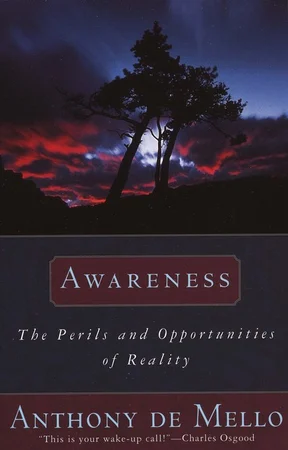
Content summary:
De Mero directly points out the core obstacles to spiritual awakening – cultural hypnosis and self-deception. Through the metaphor of “thought theater” (where multiple roles such as judge, victim, and controller reside within), it dissects how humans are shaped by social discipline into “automatic response machines”.
The book proposes four stages of awakening: awareness of the script of thought → breaking through the emotional blackmail → breaking free from the cultural shackles → experiencing absolute freedom. It emphasizes that “true selfishness is the prerequisite for altruism” – only by first clearing away psychological trauma can one love others healthily
Highlights of the book:
Cognitive detoxification technique: Design the “reverse questioning method” (such as “What exactly are you afraid of losing?”) Break through the psychological defense mechanism;
Cruel compassion: Revealing the manipulative desire beneath the “moral mask” (such as excessive giving which is actually seeking approval);
Practical Spiritualism: Combining psychological counseling techniques with Zen koans to provide a “self-dialogue template” for handling relationship conflicts.
Suitable for:
- Highly sensitive population
- Relationship people-pleaser
- Psychological counseling practitioners
- Spiritual practitioner.
From a scientific perspective
1.Buddha’s Brain: The Practical Neuroscience of Happiness, Love, and Wisdom
Authors: Rick Hanson, Richard Mendius, Daniel J. Siegel

Content summary:
This book is co-authored by neuropsychologist Rick Hanson and neuroscientist Richard Mendius. It combines the wisdom of Buddhist meditation with modern brain science to explore how to reshape the brain structure through meditation training and enhance happiness, empathy and wisdom.
Clarify the mechanism of meditation through neuroscience experimental data: For example, regular meditation can enhance the inhibition of the amygdala by the prefrontal cortex and reduce the stress response; Reconstruct the default mode network and reduce self-centered thinking; And through respiratory regulation, it enhances the tension of the vagus nerve, increasing heart rate variability (HRV) by 35-40%, and rapidly alleviates anxiety.
The book also systematically introduces a variety of meditation practice methods, including the “Breathing Anchoring Method” suitable for beginners, the “Body Scan Simplified Version”, the “Emotional First Aid Meditation” for dealing with high-pressure scenarios, and the “HEAL Technique” for strengthening positive neural circuits.
Highlights of the book:
Science integrates spirituality: Explain with neuroscience how meditation reshapes the brain (such as enhancing the prefrontal lobe’s regulation of the amygdala), transform Buddhist wisdom into verifiable brain mechanisms, and break the “mystical” label of meditation.
Hit the root of the pain directly: It reveals that pain stems from the fundamental contradiction between the brain’s evolutionary mechanism (negative preferences, pursuit of stability) and the essence of reality (impermanence, interconnection), and proposes “dynamic balance” as the solution.
Minimalist practical tools: It offers 5-minute fragmented exercises (such as the “breathing anchoring Method”), and 90 seconds can lower the heart rate, which is suitable for a fast-paced life.
Suitable for:
- High-pressure workplace people: Those who need quick stress-relieving tools.
- Meditation beginners: Even those with no prior knowledge can get started.
- Psychological/neuroscience practitioners: Exploring the mechanism by which meditation affects the brain.
- The practitioner of body and mind: Transcending the level of “scientifically verifying spirituality”, directly pointing to the essence of awakening.
2.The Science of Meditation
Author: Weishan Xia
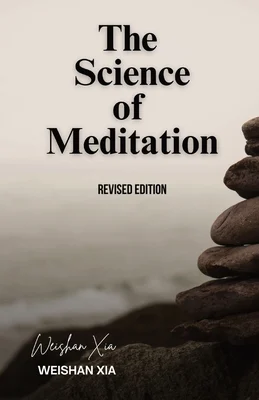
Content summary:
The book was self-published by the author on July 4, 2023. Its inspiration originated from the author’s personal records and thoughts during the process of learning meditation, gradually evolving into a systematic exploration of the biological essence of meditation rather than specific meditation techniques or religious philosophy.
The author believes that although everyone’s meditation experience is different and varies from person to person, its biological mechanism is universal. Through this book, you can find the reasons for many conditions experienced during meditation! For example, when meditating, one may feel that the hand or arm disappears.
Highlights of the book:
Focus on the biological essence: Delve into the biological mechanisms of meditation to help readers understand the commonalities among different meditation methods
Emphasize individual differences: Acknowledge the individual differences in meditation experiences and encourage readers to practice based on their own needs and experiences.
Suitable for:
- Readers interested in the scientific mechanism behind meditation.
- Hope to understand how meditation affects the operation of the brain and the body.
- Practitioners who hope to choose meditation methods based on scientific principles.
3.The Science of Meditation: The expert guide to the neuroscience of mindfulness and how to harness it
Authors: Daniel Goleman & Richard Davidson
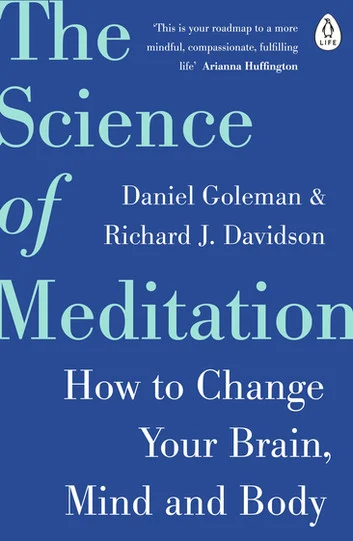
Content summary:
As a pioneering work in the neuroscience of meditation, this book presents the core theory of Altered Traits:
Brain mechanism: It has been confirmed that meditators who have spent more than 10,000 hours undergo irreversible neural remodeling (such as enhanced activation of the insula and increased empathy), which is different from the “state change” of brief relaxation.
Intertemporal effect model: Establish the “Meditation effect accumulation Formula” – the training results of the previous stage form the baseline of the subsequent stage, achieving an exponential growth in the transformation of body and mind;
The scientification of Mahayana practice: For the first time, experiments have verified that “Bodhi Mind meditation” activates the anterior cingulate cortex, providing neurobiological evidence for altruistic behavior.
Highlights of the book:
Methodological innovation: Design a control group for the HEP health program and strictly isolate the specific effects of meditation (such as demonstrating that MBSR significantly reduces inflammatory responses compared to ordinary exercise);
Cross-species evidence: Citing the tree shrew experiment, it has been confirmed that meditation can reverse the atrophy of hippocampus dendrites caused by stress and protect memory function.
Practical Toolbox: It offers clinical-grade techniques such as DMN inhibition training and pain nerve remapping, along with a self-test form for brain region activation.
Suitable for:
- Neuroscientist.
- Mindfulness mentor training trainees.
- Patients with chronic pain.
Literary works
1.Siddhartha: An Indian Novel
Author: Hermann Hesse
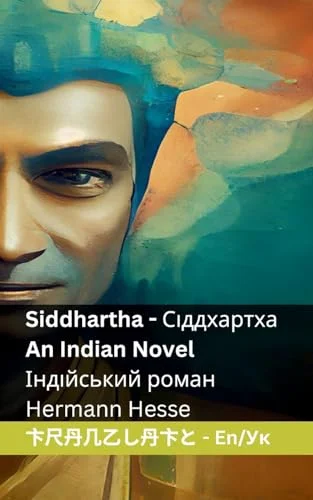
Content summary:
A classic work by the renowned German writer Hesse. Set against the backdrop of the time of the Buddha, the author tells the story of Siddhartha, a Brahmin nobleman and the founder of Buddhism, who gave up his affluent life and went through three stages of spiritual practice.
The entire book is not aimed at preaching, nor does it aim at resolving doubts. It is like a poem, and reading it makes one enter a state of deep meditation several times without knowing it.
Highlights of the book:
Combining the Buddhist concept of impermanence with Gothic individualism, the “Four-Stage Theory of Awakening” (doubt → exile → disillusionment → Rebirth) is proposed.
A classic of trauma literature: Created during Hesse’s period of mental breakdown (with his wife suffering from mental illness and the shadow of World War I), Siddhartha’s despair in the book projects the existential crisis of modern people.
Suitable for:
- Existentialist perplexed
- Middle-aged meaning seeker
- A comparative researcher of Eastern and Western philosophies
2.The Dharma Bums
Author: Jack Kerouac

The “Beat Generation” spiritual manifesto is based on the true experiences of the author and poet Gary Snyder. This book shares the same tone as “On the Road”, still starting from a tumultuous friend by my side.
The story narrator “I” and a group of friends who are obsessed with Eastern Zen Buddhism have a smooth experience of mountain climbing, wandering and composing poems together. The protagonist not only holds his head upside down every day, but also rushes into the forest to take deep breaths and meditate freely.
The book criticizes the alienation of human beings caused by consumerism and puts forward the “Dharma Wanderer Declaration” : maintaining the wildness of the soul through wandering and resisting the utilitarian society with “aimless walking”
Suitable for:
- Naturalist meditator.
- Practitioners of anti-consumerism.
- Cross-cultural meditation explorer.
Struggling to turn theory into practice? Click here,Start Your Free Audio-Guided Meditation Now!
